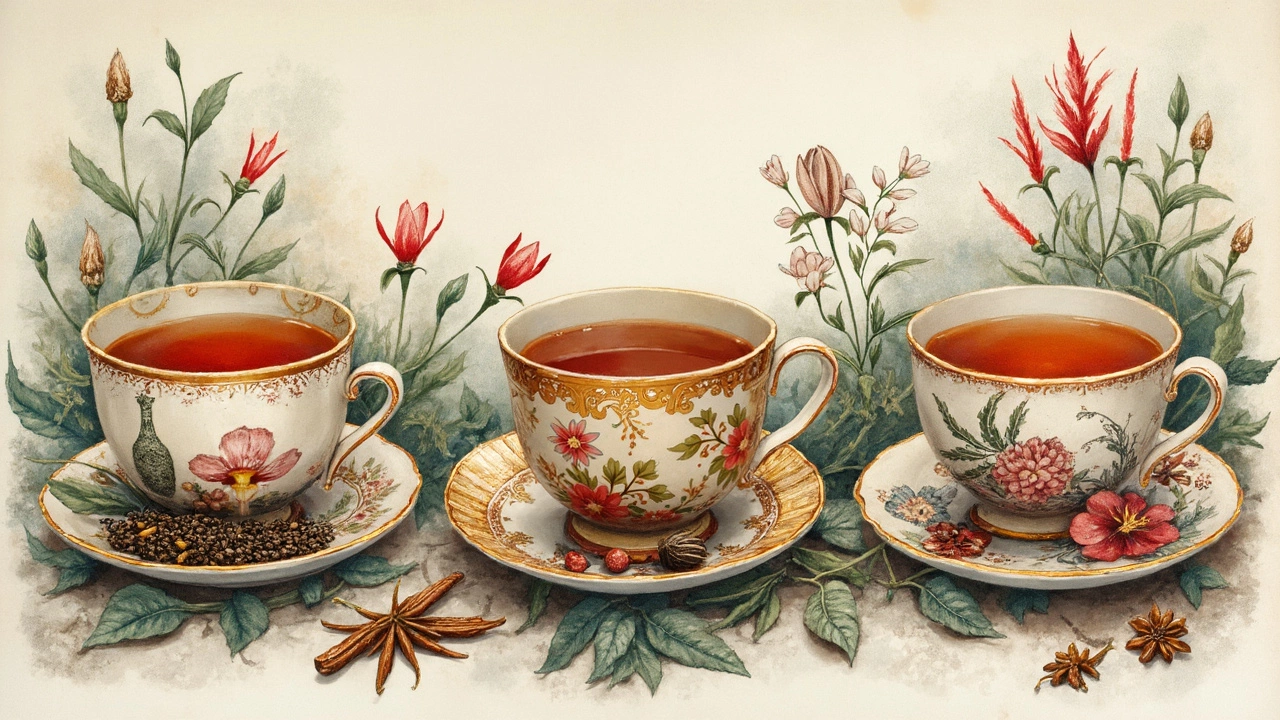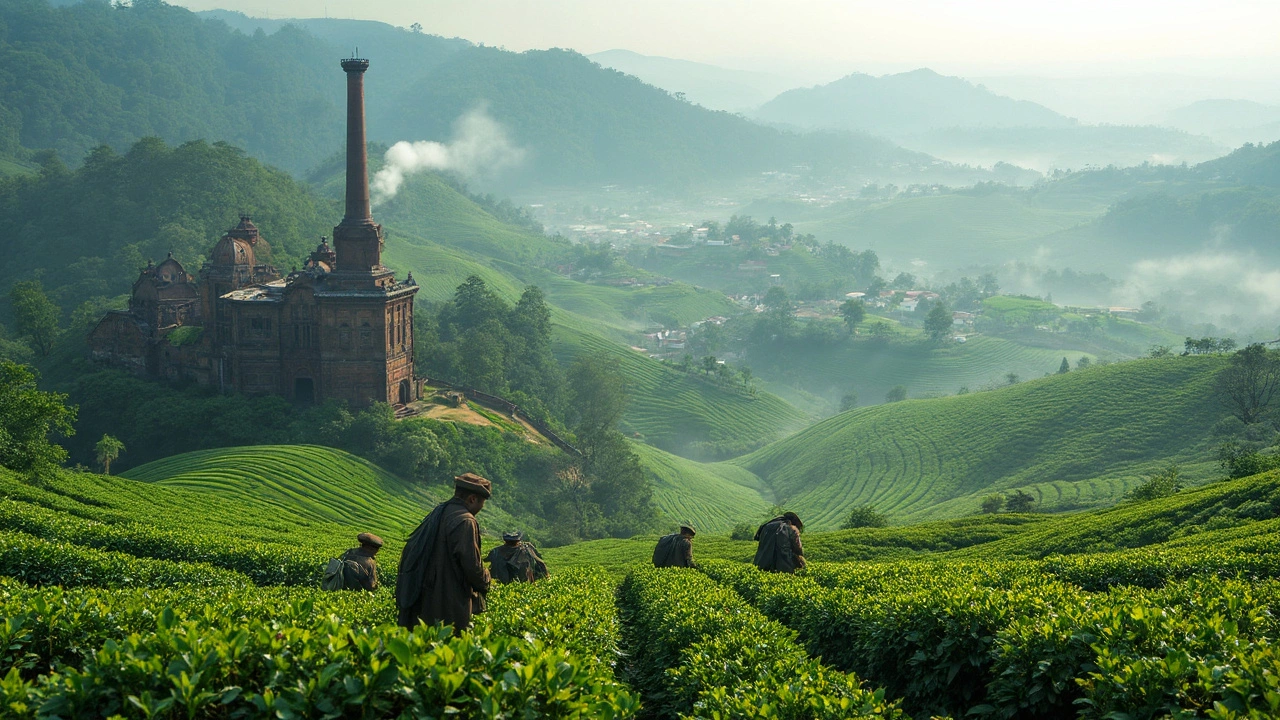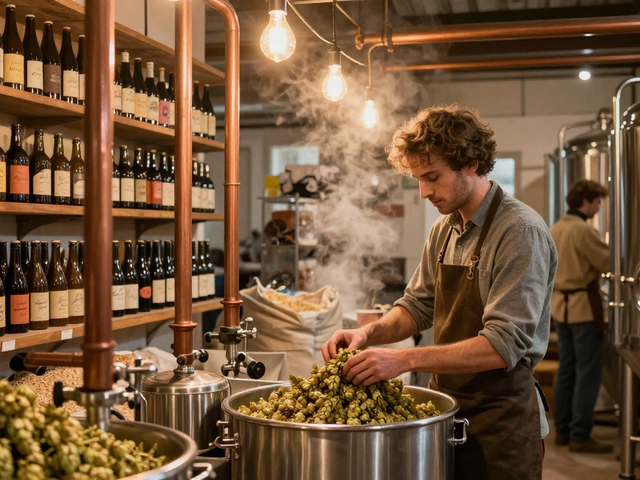Ever wondered which country tops the chart in tea production? It's China! This powerhouse isn't just known for its ancient culture but also its massive contribution to the world's tea supply. China's climate and geography make it ideal for growing a variety of teas, from the famous green teas to the elegant whites and robust blacks.
Tea plantations in China are a sight to behold, stretching over rolling hills and creating a perfect setting for this beloved drink's journey from plant to cup. The techniques used in Chinese tea farming have been honed over centuries, embracing both tradition and modern advancements. But why does this mean anything to someone who enjoys a good brew? Knowing where your tea comes from and how it's grown can elevate your tasting experience.
- Leading Tea Producer
- The Art of Cultivation
- Unique Varieties and Flavors
- Why It Matters to Tea Lovers
Leading Tea Producer
When it comes to sheer volume, China reigns supreme in the world of tea production. It's not just a modern-day achievement; this has been the case for centuries. The country is a tea titan, thanks to its vast array of geographical regions that are perfect for cultivating different types of tea. In fact, China grows more than 2.5 million tons of tea every year! This makes up a significant chunk of the global tea production.
Key Regions
Different provinces in China are known for their unique teas. Zhejiang's lush green hills are famous for Longjing, or Dragon Well tea, prized for its sweet flavor and smooth finish. Then you have the misty mountains of Fujian, which produce delicate white and oolong teas. Yunnan is celebrated for its robust, full-bodied black teas, connected to the birthplace of tea itself.
Traditional Meets Modern
China combines ancient tea-growing methods with contemporary techniques to optimize both quality and quantity. For instance, many farmers still hand-pluck leaves to ensure only the best are chosen, a practice that has stood the test of time due to its superior results. Meanwhile, innovations in drying and processing have made production more efficient without sacrificing quality.
| Province | Famous Tea Type |
|---|---|
| Zhejiang | Longjing (Green Tea) |
| Fujian | White and Oolong Teas |
| Yunnan | Black Tea |
Understanding what makes China the top producer of tea not only adds depth to your tea tasting but also connects you with a rich cultural history. Next time you're sipping on your favorite brew, think about the journey it's made from a picturesque Chinese plantation to your cup.
The Art of Cultivation
China's mastery in tea production is a testament to its rich history and diverse landscape. The art of tea cultivation here is an intricate dance between nature and human activity, honed over centuries. Each region boasts its own special techniques and flavors, making Chinese teas a broad spectrum of taste.
Climate and Geography
China's vast land encompasses a range of climates and altitudes, which is perfect for growing different varieties of tea. From the misty hills of Hangzhou to the mountainous terrains of Fujian, each area provides unique conditions that affect the taste and aroma of the tea leaves.
Traditional Techniques
The cultivation process begins with the careful selection of tea leaves. Farmers often hand-pick them to ensure quality, a practice passed down through generations. After picking, the leaves undergo various processes like withering, rolling, and firing, each step crucial in defining the final flavor. These traditional techniques emphasize quality over quantity, ensuring each cup is a complete experience.
Modern Advancements
While tradition holds strong, modern technology has also made its way into the tea fields of China. Innovations in irrigation, pest control, and harvesting have helped increase both the quality and quantity of tea produced. The combination of time-tested methods with new techniques helps China stay at the forefront of tea production.
| Region | Altitude | Popular Tea |
|---|---|---|
| Hangzhou | 30-150m | Longjing (Dragon Well) |
| Fujian | 600-1000m | Oolong |
| Yunnan | 1200-1400m | Puerh |
Why It Matters
Understanding the origin and cultivation methods of your tea not only enriches your appreciation but also enhances your tasting experience. Next time you brew a cup, take a moment to savor the effort and expertise that went into creating that delightful flavor.

Unique Varieties and Flavors
China isn't just the largest tea producer; it's also a treasure trove of unique tea varieties. Each region offers distinct flavors, colors, and aromas that capture the essence of the local culture. Let's dig into some of the standout varieties that have left a mark on the world of tea.
Green Tea: The Staple Delight
Green tea, perhaps the most well-known globally, is famed for its fresh, light taste. Varieties like Dragon Well (Longjing) and Biluochun boast unique flavors that are worth a try. Dragon Well, known for its flat leaves and sweet, nutty flavor, is grown primarily in Hangzhou. It's harvested in early spring, ensuring a tender and refreshing taste profile.
Black Tea: The Robust Charmer
China's black tea, or "hong cha," offers a strong, full-bodied flavor that's a favorite worldwide. Varieties such as Keemun from Qimen County are cherished for their rich aroma and slightly fruity taste. This is often referred to as "the Burgundy of teas" thanks to its unique wine-like notes.
White Tea: The Gentle Touch
White tea, like White Peony (Bai Mudan), is less processed, delivering a delicate, fruity flavor with a floral aroma. It's primarily grown in Fujian Province and is perfect for those who prefer a lighter, sweeter profile.
Oolong: The Complex Middle Ground
Oolong teas are semi-oxidized, featuring a complexity that lies between green and black teas. Tieguanyin, from Fujian, offers a floral and creamy flavor that titillates your taste buds. The process of crafting oolong is an art in itself, involving precise timing and fermentation méthodes that transform the leaves into a nuanced beverage.
Intrigued by the unique flavors of these varieties? Understanding tea beyond just a morning ritual opens up a vibrant world of tastes and experiences. Whether you prefer a light green or a robust black, Chinese teas offer something for every palate. So grab a cup and dive into these mesmerizing flavors!
| Tea Variety | Main Flavor Profile | Region |
|---|---|---|
| Dragon Well | Sweet, Nutty | Hangzhou |
| Keemun | Rich, Fruity | Qimen County |
| White Peony | Fruity, Floral | Fujian |
| Tieguanyin | Floral, Creamy | Fujian |
Why It Matters to Tea Lovers
Understanding which country is the top tea production leader isn't just trivia—it's a game-changer for tea enthusiasts. With China being the go-to place for tea production, it means you're experiencing centuries of perfection right in your cup. Let's break down why this matters.
Quality and Variety
Thanks to a diverse landscape, China offers a wide range of tea varieties. From earthy green teas to delicate white teas, the spectrum of flavors is immense. Knowing the origins of your tea helps you appreciate the nuances and choose the brew that best suits your taste.
Authenticity Matters
When you buy tea from the leading tea country, you’re often guaranteed authenticity. Think of it like buying champagne from the Champagne region. It's not just tea—it's an experience rooted in tradition.
Value for Money
Given China's massive output, the competition amongst producers is high, driving quality up and prices down. So, you're likely getting a superior product without the premium price tag you might expect.
Supporting Sustainable Practices
Many Chinese tea farms are leaning towards sustainable and environmentally friendly practices, recognizing the importance of preserving their natural landscape. As tea lovers, purchasing their products supports these positive efforts.
The connection between tea lovers and the top tea production countries provides more than just a satisfying sip. It's about quality, tradition, and sustainable practices, every bit as significant as the rich flavors in your teacup.


